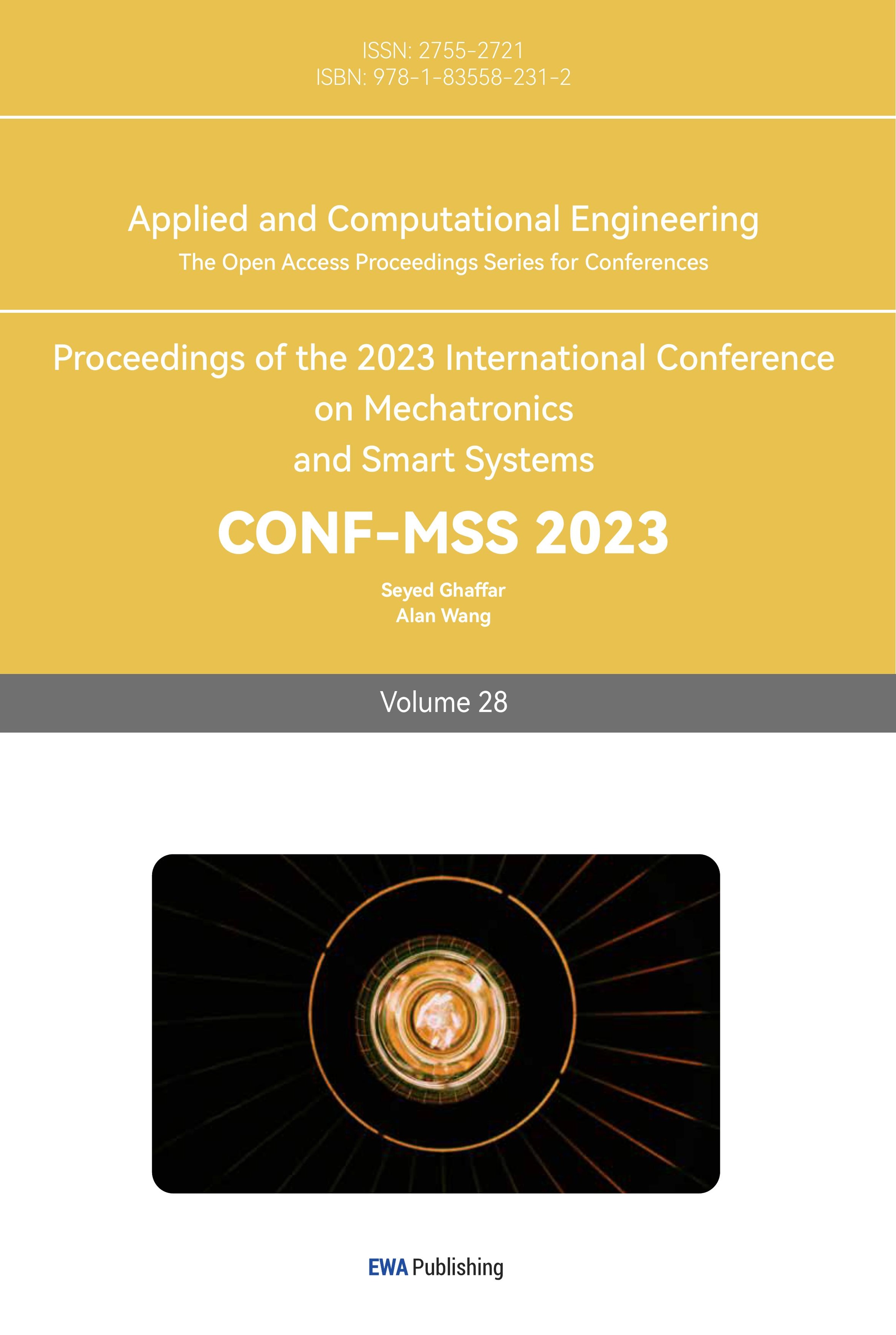References
[1]. Khan J H S., Kadri M B. (2013) DC motor speed control by embedded PI controller with hardware-in-loop simulation. 2013 3rd IEEE International Conference on Computer, Control and Communication (IC4), Karachi, Pakistan, 23: 1-4.
[2]. Xue D., Yang Q. (2007) Linear Feedback Control. In Linear Feedback Control, Philadelphia: Society for Industrial and Applied Mathematics, 20: 183-235.
[3]. Hu H., Wang T., Zhao S. (2019) Speed control of brushless direct current motor using a genetic algorithm–optimized fuzzy proportional integral differential controller. Advances in Mechanical Engineering, 11(11): 2709-2717.
[4]. Akar M., Hekim M., Temiz I. (2012) The Speed and Torque Control of Direct Current Servo Motors by using Cascade Fuzzy PI Controller. Przeglad Elektrotechniczny, 88(5): e173-e173.
[5]. Kim S H. (2017) Control of direct current motors. Electric Motor Control, 17: 39-93.
[6]. Khanke M P., Jain A S. (2015) Speed control of Separately Excited DC Motor using various Conventional Controllers. International Journal of Engineering Research and Applica¬tions, 15: 45-49.
[7]. Rossi A., Concari C. (2012) A Novel BLDC-Like DTC Control Technique for Induction Motors. Advances in Power Electronics, 12(1): 986702.1-986702.8.
[8]. Rodríguez J., Pontt J., Silva C. (2004) Hysteresis current control of a vector controlled in-duction motor and DTC: An assessment. International Journal of Electronics, 91(11): 639-651.
[9]. Corapsiz G., Muhammed R. (2017) The Speed Control of DC Motor under the Load Condi¬tion using PI and PID Controllers. AIP Conference Proceedings, 1833(1): 1-5.
[10]. Patil A., Palnitkar G. (2020) Comparative Study and Implementation of Speed Control of BLDC Motor using Traditional PI and Fuzzy-PI Controller. International Journal of En-gineering and Technical Research, 20(4): 112-118.
[11]. Mahmud M., Motakabber S., Alam A. (2020) Control BLDC Motor Speed using PID Con-troller. International Journal of Advanced Computer Science and Applications, 11(3): 477-481.
Cite this article
Li,H. (2023). Speed control of direct current motors using proportional integral controllers. Applied and Computational Engineering,28,141-149.
Data availability
The datasets used and/or analyzed during the current study will be available from the authors upon reasonable request.
Disclaimer/Publisher's Note
The statements, opinions and data contained in all publications are solely those of the individual author(s) and contributor(s) and not of EWA Publishing and/or the editor(s). EWA Publishing and/or the editor(s) disclaim responsibility for any injury to people or property resulting from any ideas, methods, instructions or products referred to in the content.
About volume
Volume title: Proceedings of the 2023 International Conference on Mechatronics and Smart Systems
© 2024 by the author(s). Licensee EWA Publishing, Oxford, UK. This article is an open access article distributed under the terms and
conditions of the Creative Commons Attribution (CC BY) license. Authors who
publish this series agree to the following terms:
1. Authors retain copyright and grant the series right of first publication with the work simultaneously licensed under a Creative Commons
Attribution License that allows others to share the work with an acknowledgment of the work's authorship and initial publication in this
series.
2. Authors are able to enter into separate, additional contractual arrangements for the non-exclusive distribution of the series's published
version of the work (e.g., post it to an institutional repository or publish it in a book), with an acknowledgment of its initial
publication in this series.
3. Authors are permitted and encouraged to post their work online (e.g., in institutional repositories or on their website) prior to and
during the submission process, as it can lead to productive exchanges, as well as earlier and greater citation of published work (See
Open access policy for details).
References
[1]. Khan J H S., Kadri M B. (2013) DC motor speed control by embedded PI controller with hardware-in-loop simulation. 2013 3rd IEEE International Conference on Computer, Control and Communication (IC4), Karachi, Pakistan, 23: 1-4.
[2]. Xue D., Yang Q. (2007) Linear Feedback Control. In Linear Feedback Control, Philadelphia: Society for Industrial and Applied Mathematics, 20: 183-235.
[3]. Hu H., Wang T., Zhao S. (2019) Speed control of brushless direct current motor using a genetic algorithm–optimized fuzzy proportional integral differential controller. Advances in Mechanical Engineering, 11(11): 2709-2717.
[4]. Akar M., Hekim M., Temiz I. (2012) The Speed and Torque Control of Direct Current Servo Motors by using Cascade Fuzzy PI Controller. Przeglad Elektrotechniczny, 88(5): e173-e173.
[5]. Kim S H. (2017) Control of direct current motors. Electric Motor Control, 17: 39-93.
[6]. Khanke M P., Jain A S. (2015) Speed control of Separately Excited DC Motor using various Conventional Controllers. International Journal of Engineering Research and Applica¬tions, 15: 45-49.
[7]. Rossi A., Concari C. (2012) A Novel BLDC-Like DTC Control Technique for Induction Motors. Advances in Power Electronics, 12(1): 986702.1-986702.8.
[8]. Rodríguez J., Pontt J., Silva C. (2004) Hysteresis current control of a vector controlled in-duction motor and DTC: An assessment. International Journal of Electronics, 91(11): 639-651.
[9]. Corapsiz G., Muhammed R. (2017) The Speed Control of DC Motor under the Load Condi¬tion using PI and PID Controllers. AIP Conference Proceedings, 1833(1): 1-5.
[10]. Patil A., Palnitkar G. (2020) Comparative Study and Implementation of Speed Control of BLDC Motor using Traditional PI and Fuzzy-PI Controller. International Journal of En-gineering and Technical Research, 20(4): 112-118.
[11]. Mahmud M., Motakabber S., Alam A. (2020) Control BLDC Motor Speed using PID Con-troller. International Journal of Advanced Computer Science and Applications, 11(3): 477-481.









